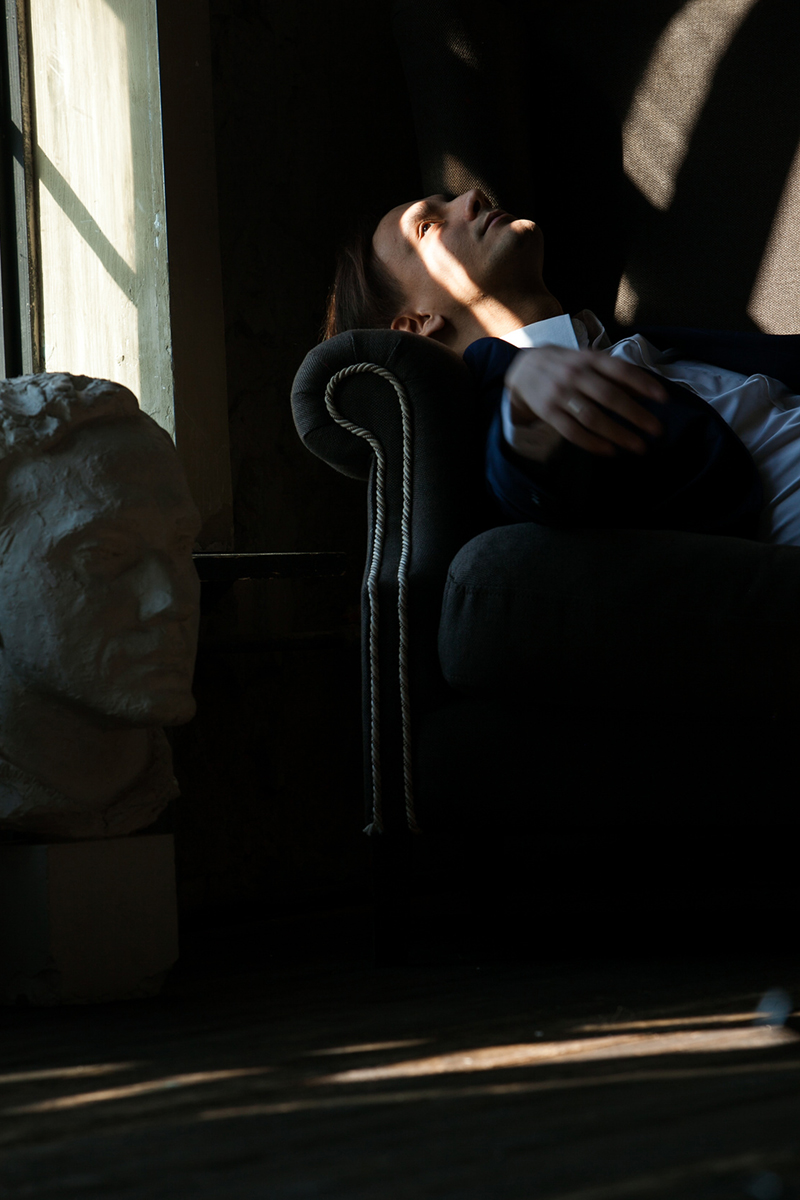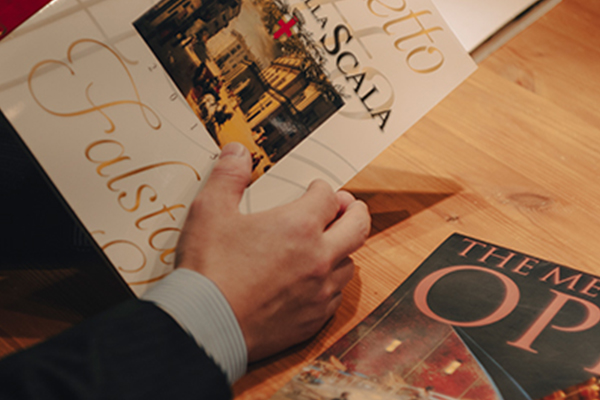なにも考えないという知性。
Feature | 2024.03.23
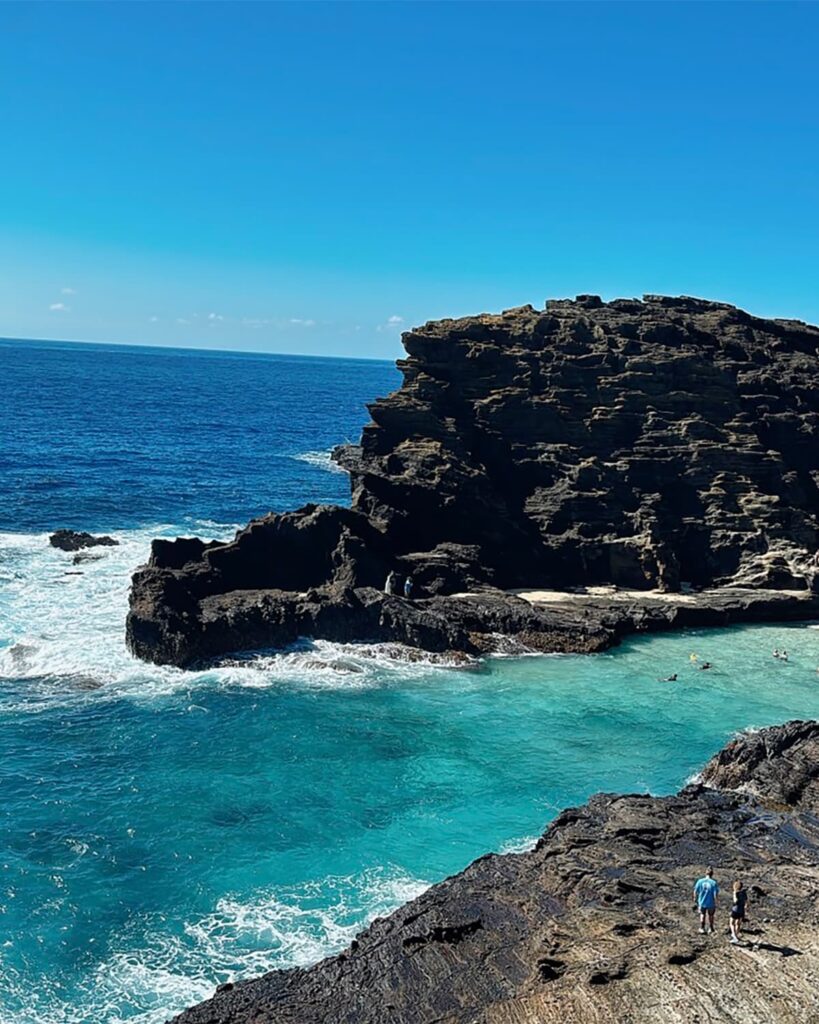
Halona Beach Cove ( Cockroach Cove )
ハワイで空っぽになる。
その空っぽになったところにナニカが吹き込む。
そうしてハワイは人を変える。
ハワイの楽しみ方はさまざま。ショッピングやグルメ、ゴルフが目的の人がいるかと思えば、大自然と共鳴し、土地の歴史や文化を求める人がいる。近頃ではミーハーなハワイに飽きた人が増えてきたのか、正月をワイキキで過ごす芸能人を追っかける野暮なテレビ番組も少なくなった。やっと、ゆっくり、ハワイの楽しみ方が正常化してきている。
大空の下、波の音を聴きながら海風に吹かれ、ぼんやりと過ごす。あとはお気に入りの文庫本が一冊と、ちょっとしたアルコールがあればいい。すっかり空っぽな人になれることが、ハワイでの幸せ。
ギャビー・パヒヌイというハワイのミュージシャンがいた。スラックキーギターの名手であり、あのライ・クーダーが惚れ込んだ、まさにミュージシャンズミュージシャン。ギャビーのハワイアンを聴いていると気持ちがゆるむ。比喩としての “ゆるむ” ではなく、実感として気持ちが “ゆるむ” のだ。
ギャビーの音楽は、ハワイで生きてきたからこそ表現できるものだと思える。そもそも彼が得意とするスラックキーギターのスラックとは、弦をゆるめたオープンチューニングによるハワイ独特の奏法。ほら、ここにも “ゆるむ” がある。
ハワイで人はゆるみ、空っぽになり、その空っぽになった部分にナニカが吹き込んでくる。例えば美しい星空を眺めていると、その空っぽな部分に美意識が芽生え、星をテーマにした詩作や曲想が生まれる。あるいは、星の起源や星座についての知識欲が起きるかもしれない。そして自分のなかに、新しい知性が生まれる。
自分を深め、豊かにする、日本人のハワイでの過ごし方が熟成してきたようだ。
The intelligence of not thinking about anything.
Hawaii can be enjoyed many ways. While some visit for shopping, gourmet food, and golf, others seek resonance with nature, delving into the land’s history and culture. Lately, it seems people are getting tired of the clichéd Hawaii, evidenced by a decrease in tacky TV shows chasing celebrities spending New Year’s in Waikiki. Finally, slowly, the way Hawaii is enjoyed is returning to normal.
Spending time under the vast sky, listening to the waves while being caressed by the sea breeze, and simply idling away. Maybe also a favorite paperback and a little alcohol. Becoming completely empty, that is the happiness of Hawaii.
There was a Hawaiian musician named Gabby Pahinui, a master of slack-key guitar, and truly a musician’s musician adored by Ry Cooder. Listening to Gabby’s Hawaiian music is relaxing. This relaxation is not just metaphorical but a real easing of the spirit. (Try listening to Gabby’s “Blue Hawaiian Moonlight”).
Gabby’s music is a true expression of living in Hawaii. The slack in slack-key guitar refers to a unique Hawaiian technique of playing with the strings loosened in open tunings. Here again, we find the theme of “relaxation.”
In Hawaii, people unwind, become empty, and into this emptiness, something breathes in. For example, when looking at a beautiful starry sky, a sense of beauty might germinate in the empty space, and a poem or song about the stars is born. Or, you may become curious about the origins of stars and constellations. And a new intelligence is born within.
The way Japanese people spend time in Hawaii seems has matured into something deeper, richer.
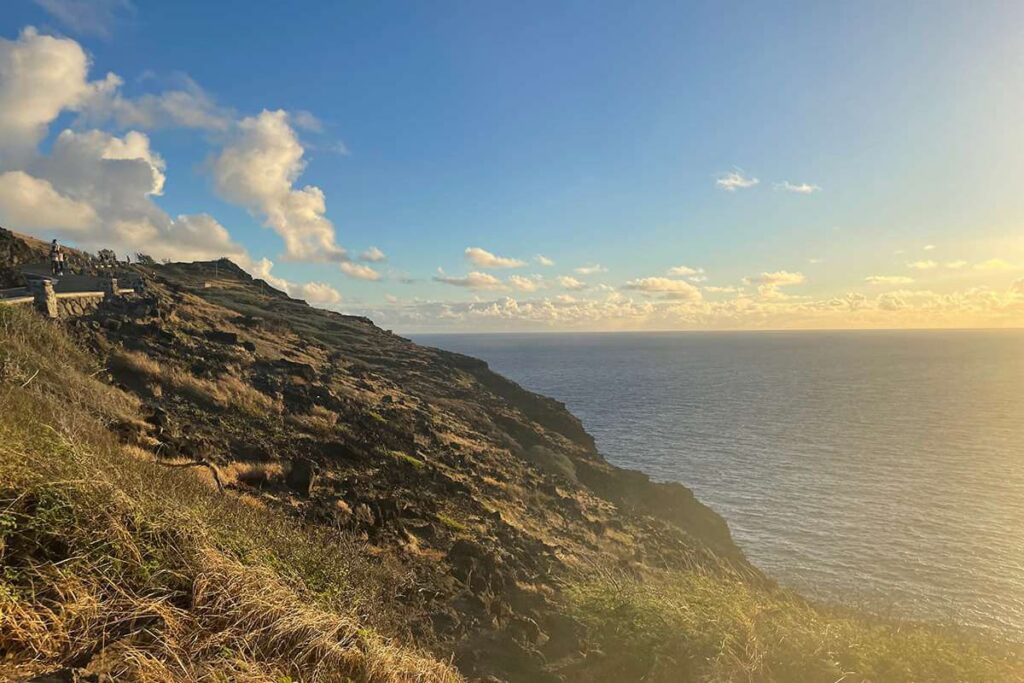
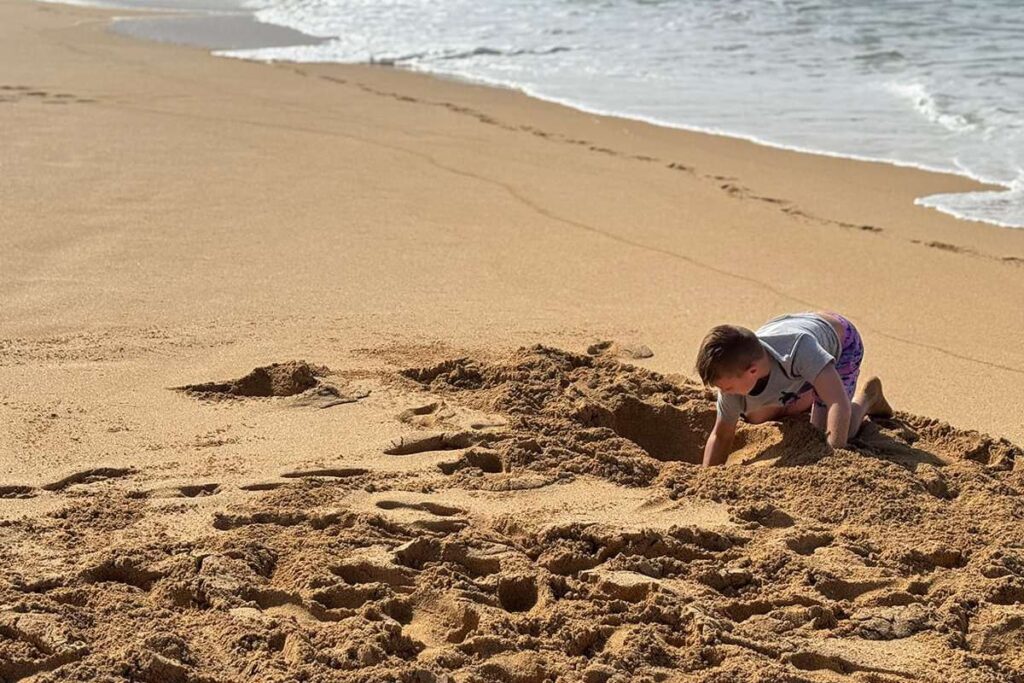
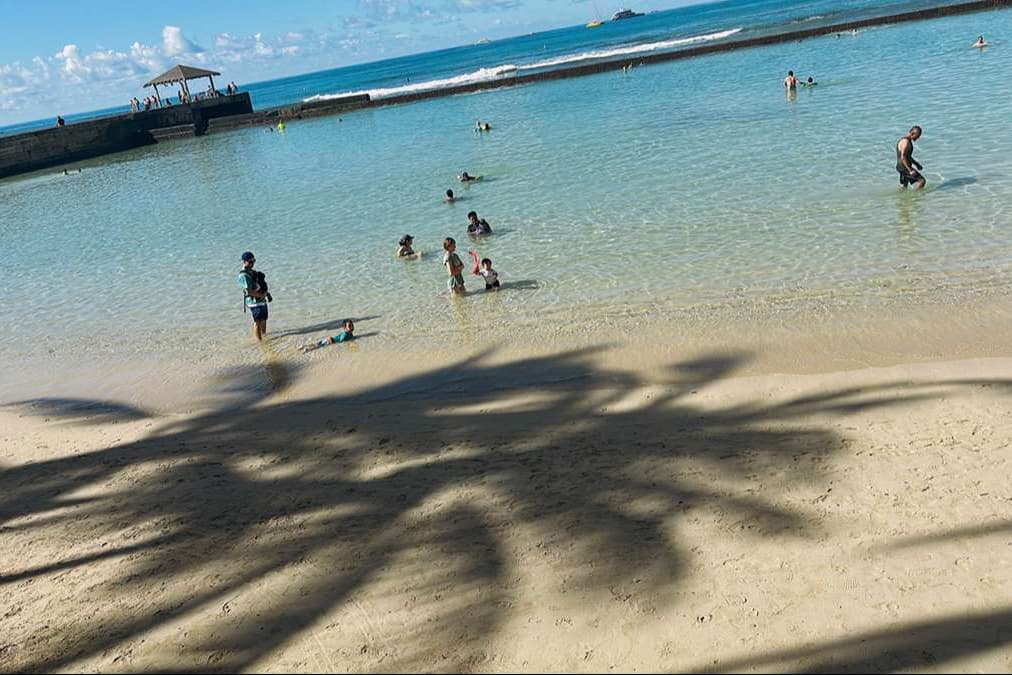
a. Kaiwi State Scenic Shoreline
b. Waimea Bay Beach Park
c. Kapiolani Park Beach.
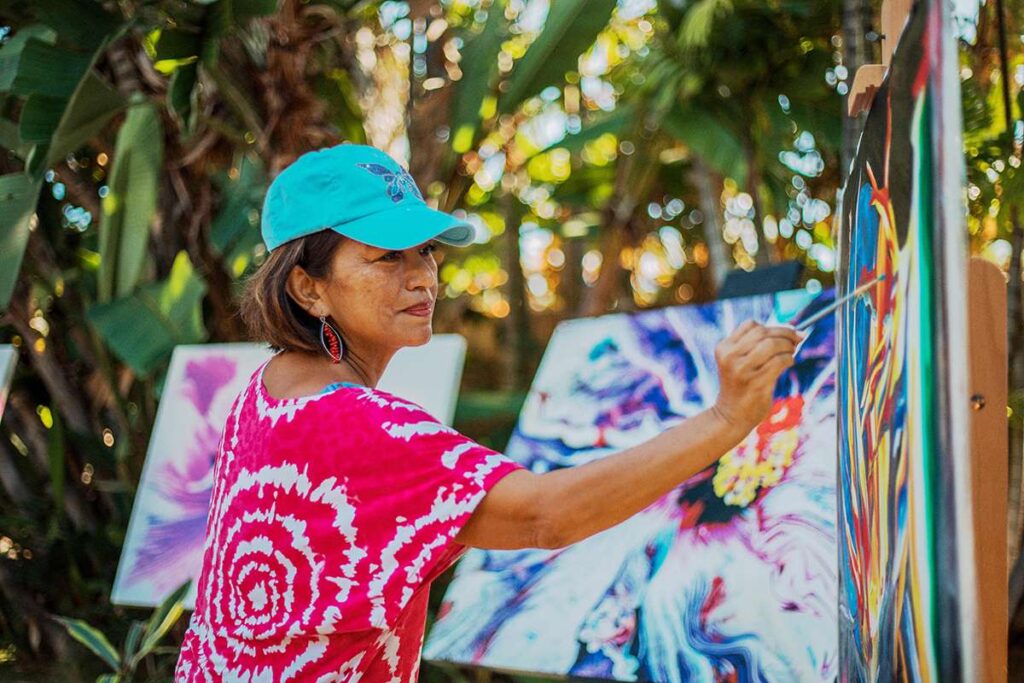
豊かな感性と美意識をハワイが目覚めさせた。
Leni Acosta Knight(レニ・アコスタ・ナイト)
Leni Acosta Knight is an international artist
based in Honolulu, Hawaii, USA.
web : https://leniknight.com/
ハワイだからこそのアート。そう思わせる絵を描くレニ・アコスタ・ナイト。この島で育まれた感性をキャンバスに表現している。「私は、宇宙とつながること、そしてそれができる人間の心と精神に魅了されています。ハワイで語り継がれてきた物語や、そこに息づく哲学、心理学、自然などが、私に絵を描かせます」とレニは語る。
レニはフィリピンで生まれ、16歳でアメリカ本土へと渡った。不動産業や金融業を経験した後、2015年から絵を描き始める。そしてハワイへ移住、いまでは人生の3分の2をハワイで過ごしているという。
「熱帯の花々、神話、気候、そして人々の多様性など、私はハワイから多くのインスピレーションを受けています。私の初期のシリーズ “抽象的な花” ではハイビスカスをモチーフにしました。
ハイビスカスの色にはそれぞれ意味があります。黄色は幸福や太陽の光を、赤色は愛や情熱を表しています」。ハワイと呼応するレニ。そんな彼女のスタジオからは海、空、緑が一望できる。そこにいるとハワイの大自然が囁きかけてくる。レニはその声と対話しながら理解し、それが彼女の知性となり、作品の完成度を高めている。
レニはまた、収益のほとんどを女性と小児のがんセンターに寄付。さらにDVや性的虐待、人身売買の防止を目的にしたハワイの人道的プログラムの支援を行っている。そこには人を思うやさしさがあふれている。
レニにとってのハワイ、それは絵だけではなく、生き方にも影響を与えているようだ。
Art inspired by Hawaii. Leni Acosta Knight paintings evoke that thought. Her canvas expresses the sensibility she cultivated on this island. Leni says, “I am fascinated by our connection to the universe and the human mind and spirit that allow that. The stories passed down in Hawaii, its philosophy, psychology, nature—all inspire me to paint.”
Born in the Philippines, Leni moved to the US mainland at 16. After working in real estate and finance, she began painting in 2015 and has since relocated to Hawaii, where she has now spent two-thirds of her life.
“I draw a lot of inspiration from Hawaii—its tropical flowers, myths, climate, and the diversity of its people. In my early series Abstract Flowers, I focused on the hibiscus,
where each color signifies something: yellow happiness and sunlight, and red love and passion.” Leni breathes Hawaii. Her studio has panoramic views of the sea, sky, and greenery, whispering the grandeur of Hawaii’s nature. Leni converses with and understands these whispers, which become her intelligence and refine her works.
Leni also donates most of her proceeds to cancer centers for women and children and supports Hawaiian humanitarian programs aimed at preventing domestic violence, sexual abuse, and human trafficking, demonstrating overflowing compassion for people.
For Leni, Hawaii influences not just her art but her way of life.
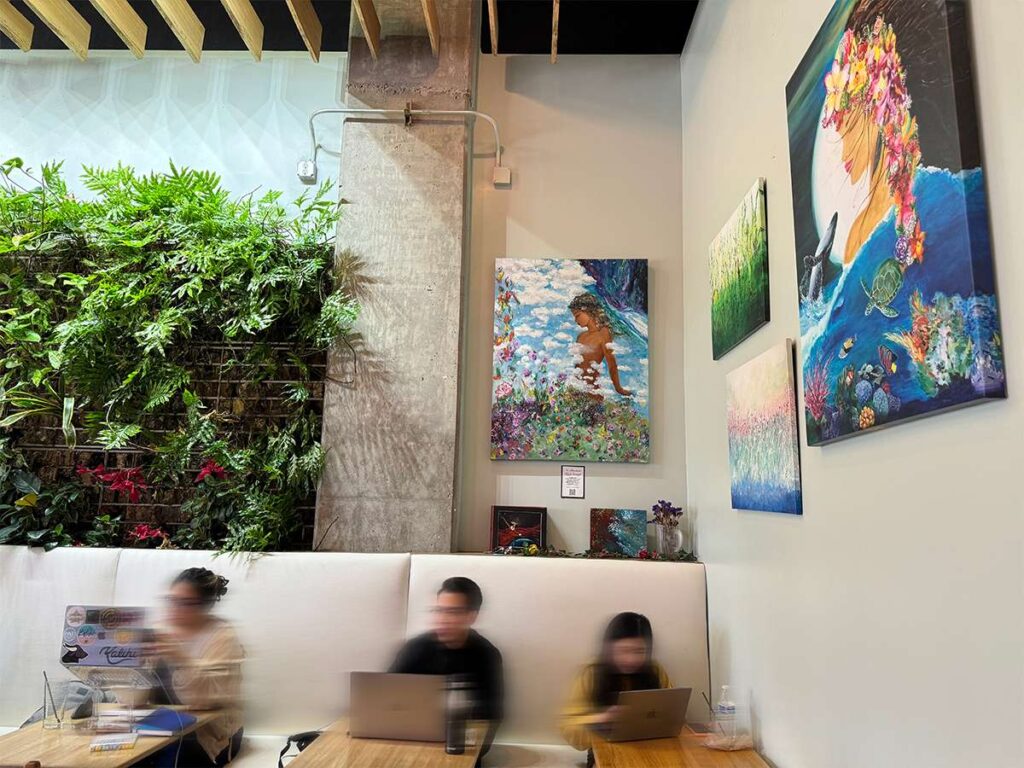
Island Brew Coffeehouse
1108 Auahi St,
Honolulu, HI 96814
https://www.islandbrewcoffeehouse.com
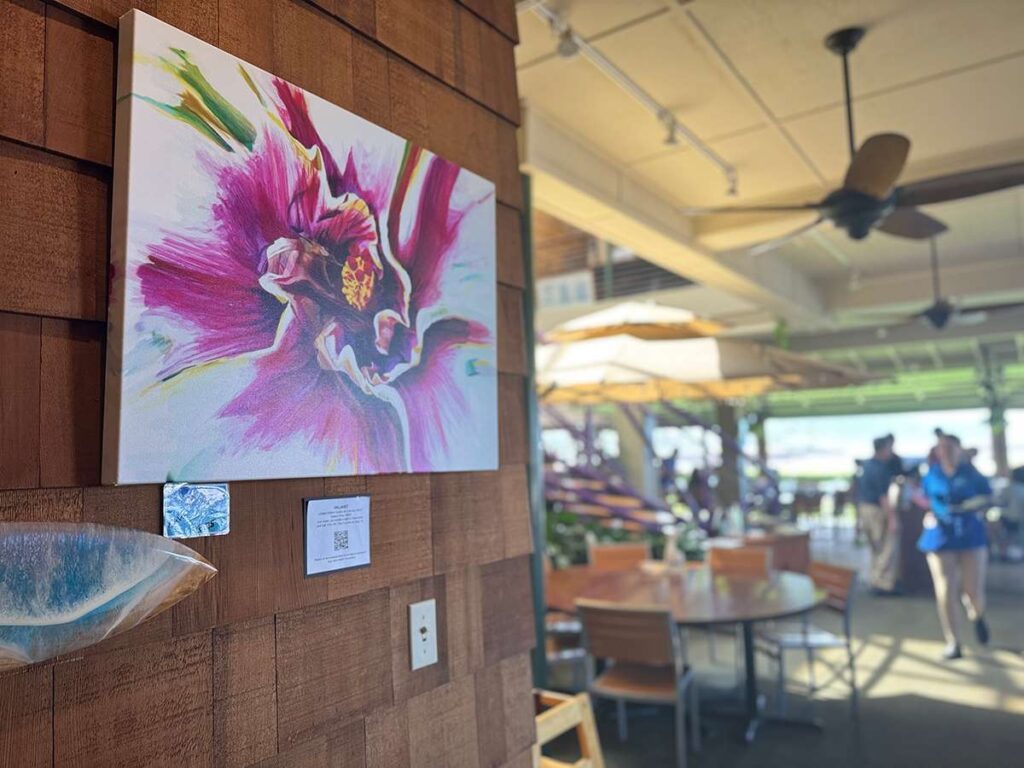
Haleiwa Beach House
62-540 Kamehameha Hwy
Haleiwa, HI. 96712
https://www.haleiwabeachhouse.com
ワードエリアの「アイランド・ブリュー・コーヒーハウス」、 ノースショアにある「ハレイワ・ビーチ・ハウス」にレニの絵が飾ってある。
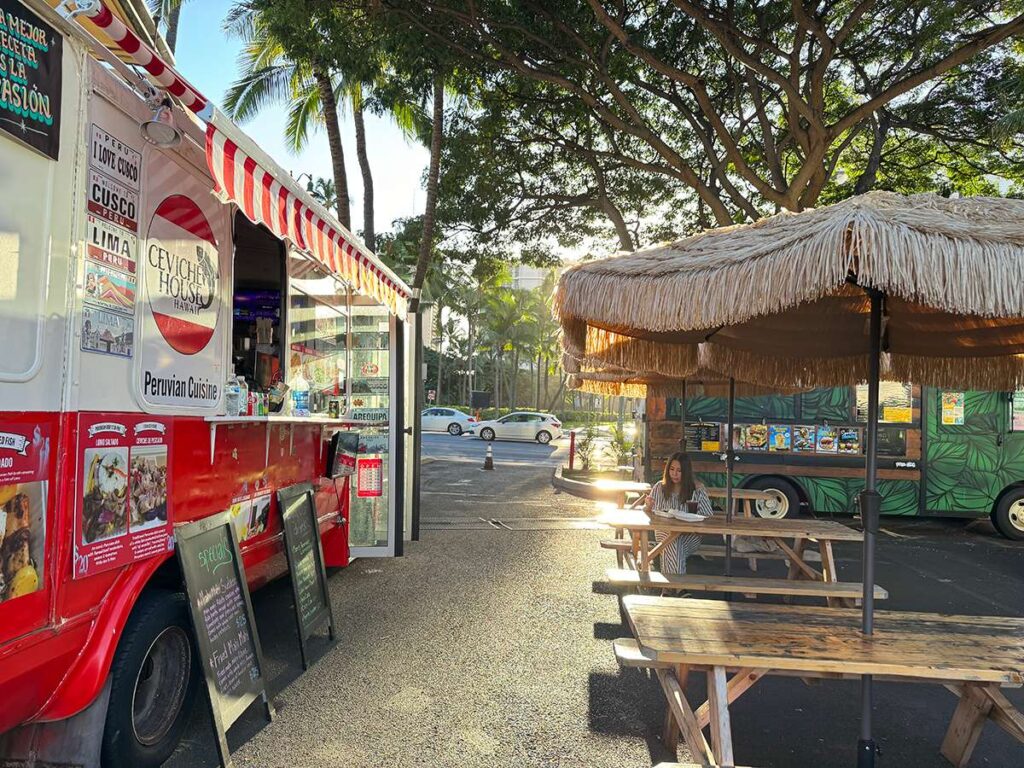
ハワイの人と自然がシェフを育てる。
Ceviche House Hawaii
1958 KalakauaAve,Honolulu, HI 96815,Waikiki
Tel: +1 808-237-0280
カラカウアからアラモアナブルーバードと交差するところにフードトラックエリアがある。ここでいま、注目されているフードトラックが “Ceviche House Hawaii”。
メニューはハワイアンでもアメリカンでもなく、ペルー料理。でもそれが美味しい!シェフのフランク・ルエダは、食に対して繊細な感覚をもつ日本人も驚くほど、丁寧な仕事をする。
まず、素材にこだわる。新鮮な魚が並ぶマーケットで、一尾一尾吟味しながら選び、その素材の美味しさを最大限に活かした料理をつくる。例えば、店名でもあるペルー料理 “セビーチェ”。いわゆる魚介のマリネだが、これが絶品。取れたてのマヒマヒを使い、ソースもそこからとっている。加えられる玉ねぎも芯の周囲の甘さのある部分だけを使用。
魚の旨味と野菜の美味しさがひとつになった、至福のひと皿だ。他にもパスタや米にもこだわり、特に米はペルー産のものだけを使っている。
フランクはペルー生まれ。お父さんがスペインでレストランを経営していて、お母さんも料理上手だというから、両親のDNAがフランクに受け継がれている。フランクはペルーからマイアミへと渡り、そこからハワイへとやって来て食に目覚めた。
フランクはいう、「僕はハワイが大好き。ここの人はみんなフレンドリーで、そしてなんといっても自然が素晴らしい。そんなハワイを、僕と同じように愛する人たちのために、本当に美味しいと思ってもらえる料理をつくっているんだよ」。
ハワイの魅力がフランクに、美味しい料理づくりに欠かせない、人を思うという知性を与えた。
At the food truck park on Ala Moana Boulevard and Kalakaua Avenue, Ceviche House Hawaii stands out as a notably popular food truck.
Their menu isn’t Hawaiian or American but Peruvian, and it’s delicious! Chef Frank Rueda, known for his meticulous work that even surprises the discerning Japanese, focuses first and foremost on ingredients. He selects each fish carefully at the market, aiming to maximize the natural flavors of the fresh ingredients. For example his sublime ceviche, a Peruvian marinated seafood dish after which his food truck is named. Using freshly caught mahi-mahi and homemade sauce, only the sweetest parts of onions are added. This dish is the blissful union of the umami of fish and the deliciousness of vegetables. Frank’s talent extends to pasta and rice, with a special preference for Peruvian rice.
Born in Peru to a father who owned a restaurant in Spain and a skilled cook for a mother, he inherited their culinary DNA. Frank moved from Peru to Miami and then to Hawaii, where he discovered his passion for food.
Frank says, “I love Hawaii. The people here are friendly, and the nature is fantastic. I make dishes that I believe people who love Hawaii as much as I do will find truly delicious.”
Hawaii’s charm has gifted Frank with the intelligence of caring for people, essential for creating delicious dishes.
Frank Rueda (フランク・ルエダ)
「Ceviche House Hawaii」
1958 KalakauaAve,Honolulu, HI 96815,Waikiki Tel: +1 808-237-0280
https://www.yelp.com/biz/ceviche-house-hawaii-honolulu
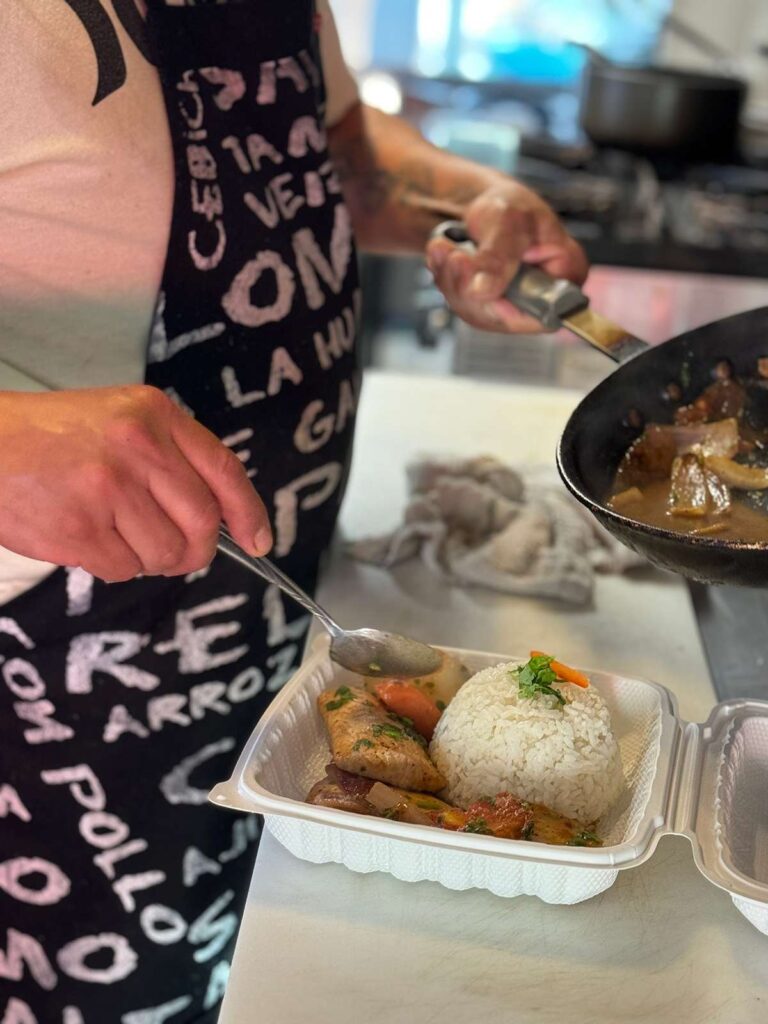
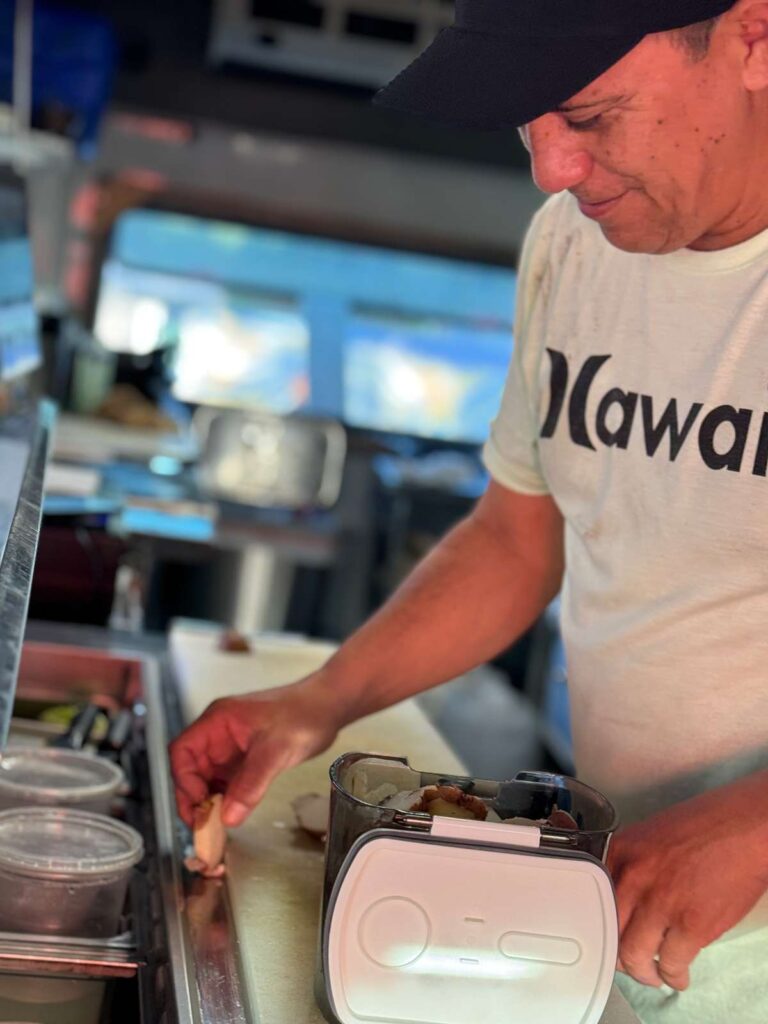
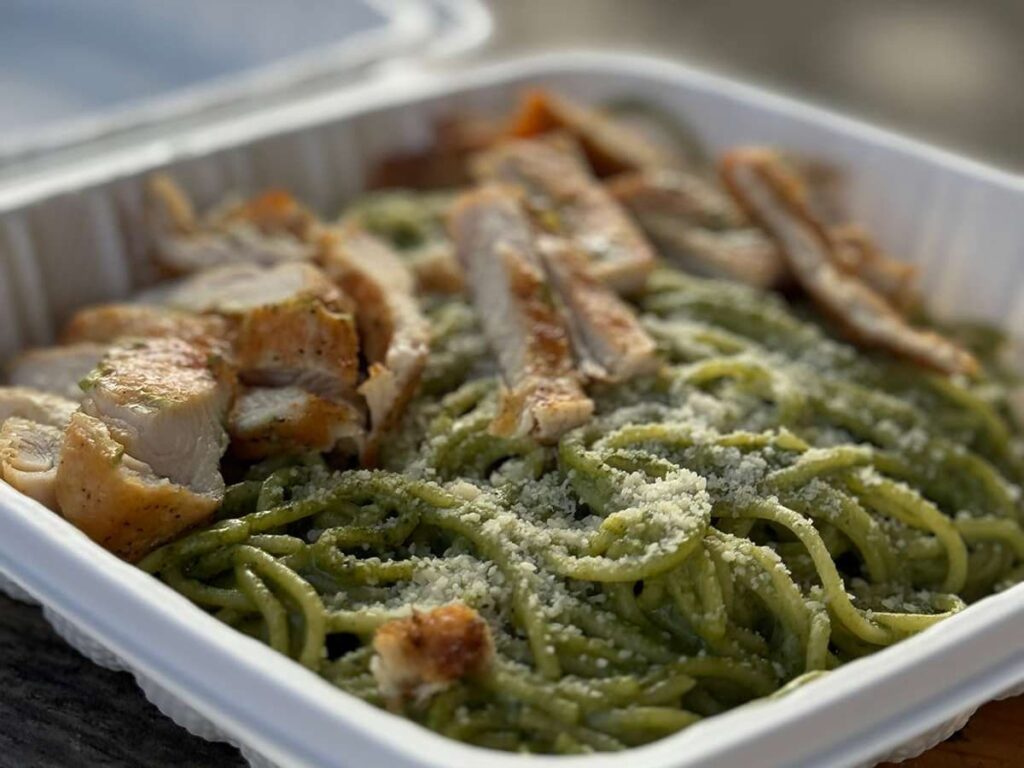
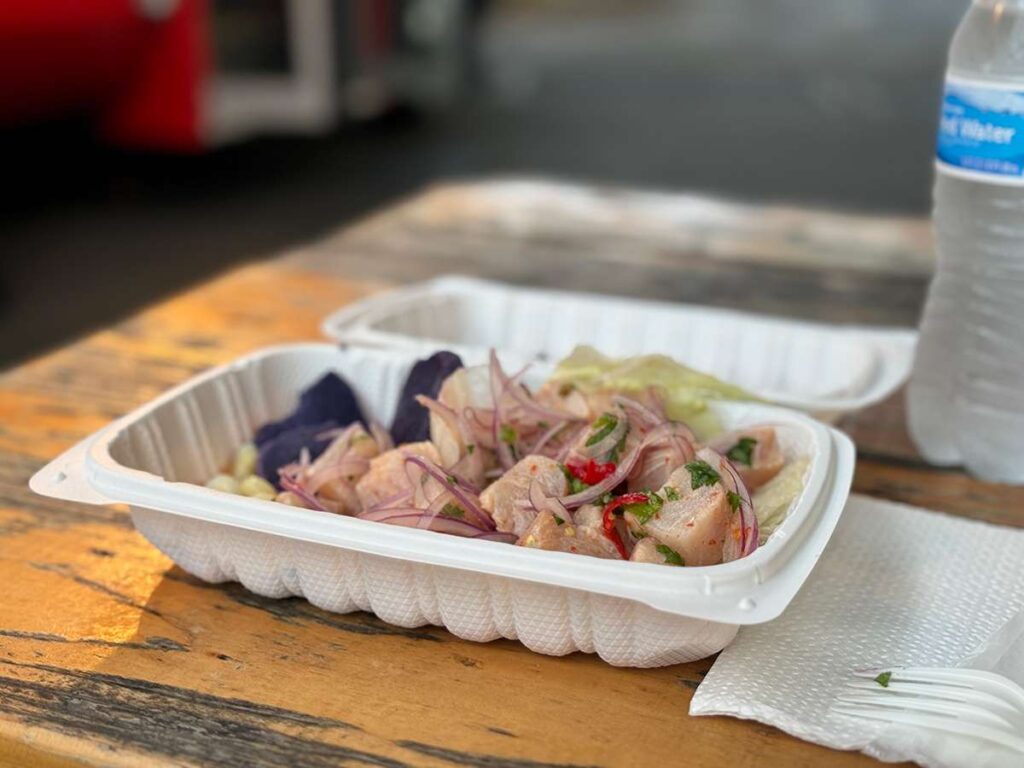
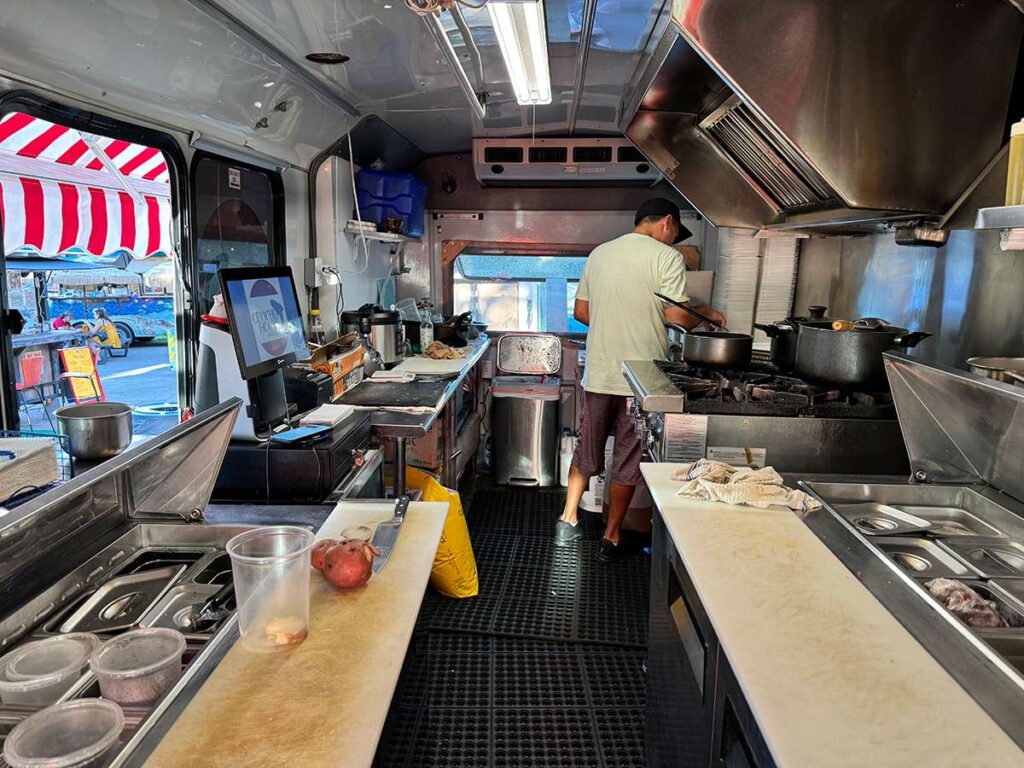

閲覧中の特集はこちら
